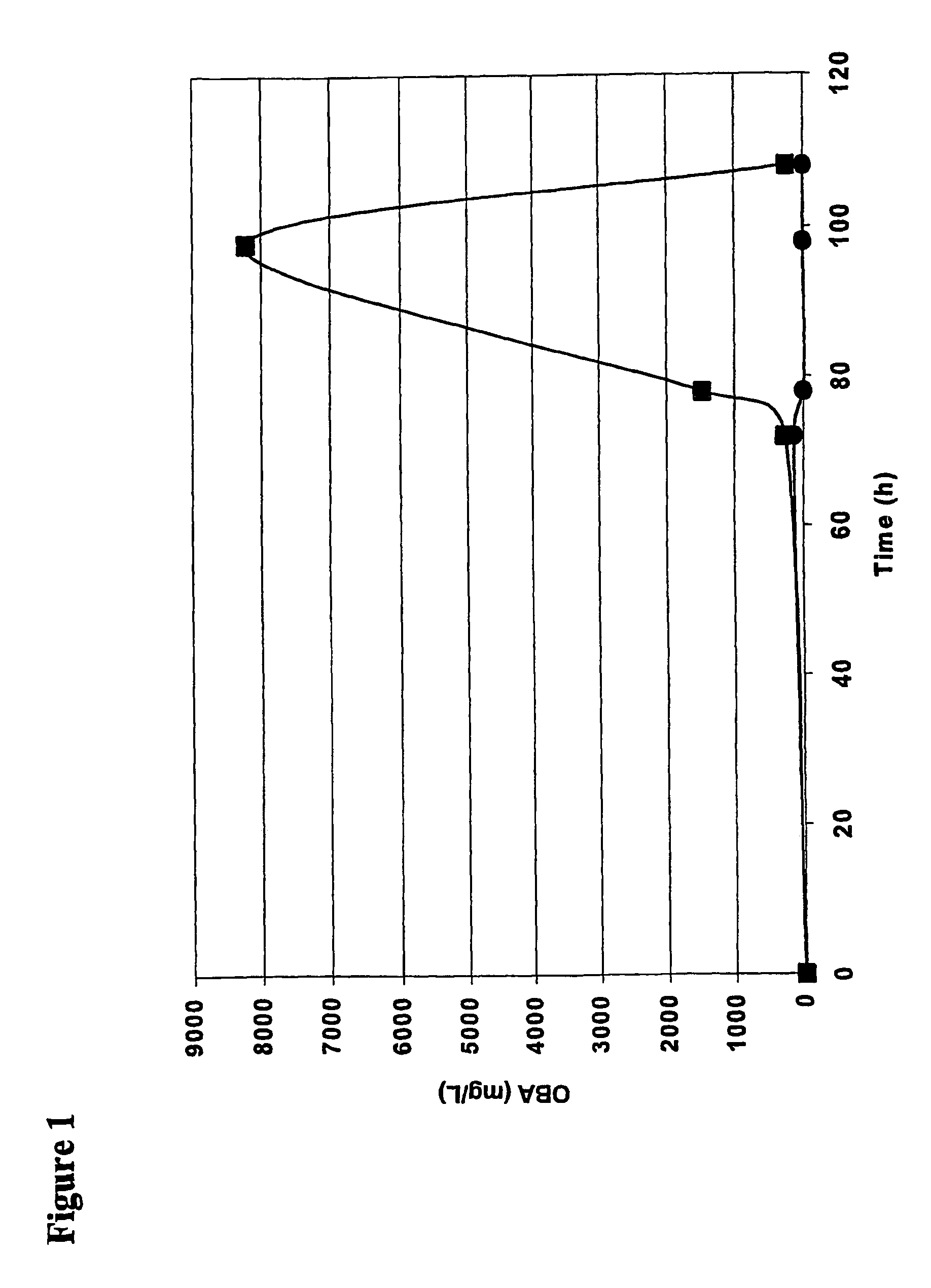Production of alpha-keto butyrate
a technology of keto butyrate and ketobutyrate, which is applied in the field of production of alpha-keto butyrate, can solve the problems of not being suitable for accumulation, not being warranted, and the -keto butyric acid obtained by fermentation of this microorganism is not easily and cheaply applicable to food products, so as to achieve easy and safe use, easy and cheap obtaining of -keto butyrate
- Summary
- Abstract
- Description
- Claims
- Application Information
AI Technical Summary
Benefits of technology
Problems solved by technology
Method used
Image
Examples
example 1
Accumulation of α-keto-butyrate by Bioconversion of Threonine in N. crassa
Material and Methods
[0064]Spores of a N. crassa strain with a ilv-3 (−) genotype purchased from the Kansas Medical Center under catalogue number FGSC 575, mating type A, are plated out on agar in an Erlenmeyer for preparation of a starter. The composition of the “Horowitz”-medium, which is used to this end, is given in table 1 below.
[0065]
TABLE 1“Horowitz” medium for cultivation of N. crassa to obtain spores.IngredientAmount per literWhole Salt Solution*200mlGlycerol (87%)185mlCasein hydrolysate0.5gYeast Extract5gMalt Extract5gAgar20gBiotin Solution**100μlDistilled wateradjust to 1000 mlpH6.5*Whole Salt Solution25 g K-Tartrate (di-Potassium tartrate hemihydrate - Merck)20 g Na-Nitrate5 g KH2PO42.5 g MgSO4 × 7H2O0.5 g CaCl2 × 2H2O0.5 g NaClAdjust to 1000 ml with distilled water.**Biotin SolutionDissolve 5 mg Biotin in 100 ml 50% Ethanol.
[0066]The strain is grown under light at 25° C. for 120 hours.
[0067]Therea...
example 2
Increased Accumulation of α-keto-butyrate in a Two-Step Fermentation Process
Material and Methods
[0073]The same strain, media and equipment as cited in example 1 are used.
[0074]In a first fermentation, biomass is produced by inoculating a medium comprising the enriched Vogel-salt solution, L-valine and L-isoleucine (threonine is added lately) according to the data in example 1. At the beginning of the fermentation, the pH is at 5.8, and drops to 4.4 after 72 hours at 26° C. under slight agitation (200 rpm).
[0075]Then the hyphal cells are filtrated (0.22 μm) and transferred into a different medium, that is a phosphate buffer (0.1 M), which further comprises threonine (2%) and valine (0.03%). The pH is adjusted to 10 with NaOH (10N).
[0076]After in total 110 hours, at 25° C. and 200 rpm, the bioconversion is interrupted by filtrating the medium to remove the biomass and storing the permeate at 4° C. until further analysis.
Results
[0077]High amounts of α-keto-butyrate (>8 g / l) were obtain...
PUM
| Property | Measurement | Unit |
|---|---|---|
| temperature | aaaaa | aaaaa |
| time | aaaaa | aaaaa |
| wet weight | aaaaa | aaaaa |
Abstract
Description
Claims
Application Information
 Login to View More
Login to View More - R&D
- Intellectual Property
- Life Sciences
- Materials
- Tech Scout
- Unparalleled Data Quality
- Higher Quality Content
- 60% Fewer Hallucinations
Browse by: Latest US Patents, China's latest patents, Technical Efficacy Thesaurus, Application Domain, Technology Topic, Popular Technical Reports.
© 2025 PatSnap. All rights reserved.Legal|Privacy policy|Modern Slavery Act Transparency Statement|Sitemap|About US| Contact US: help@patsnap.com

